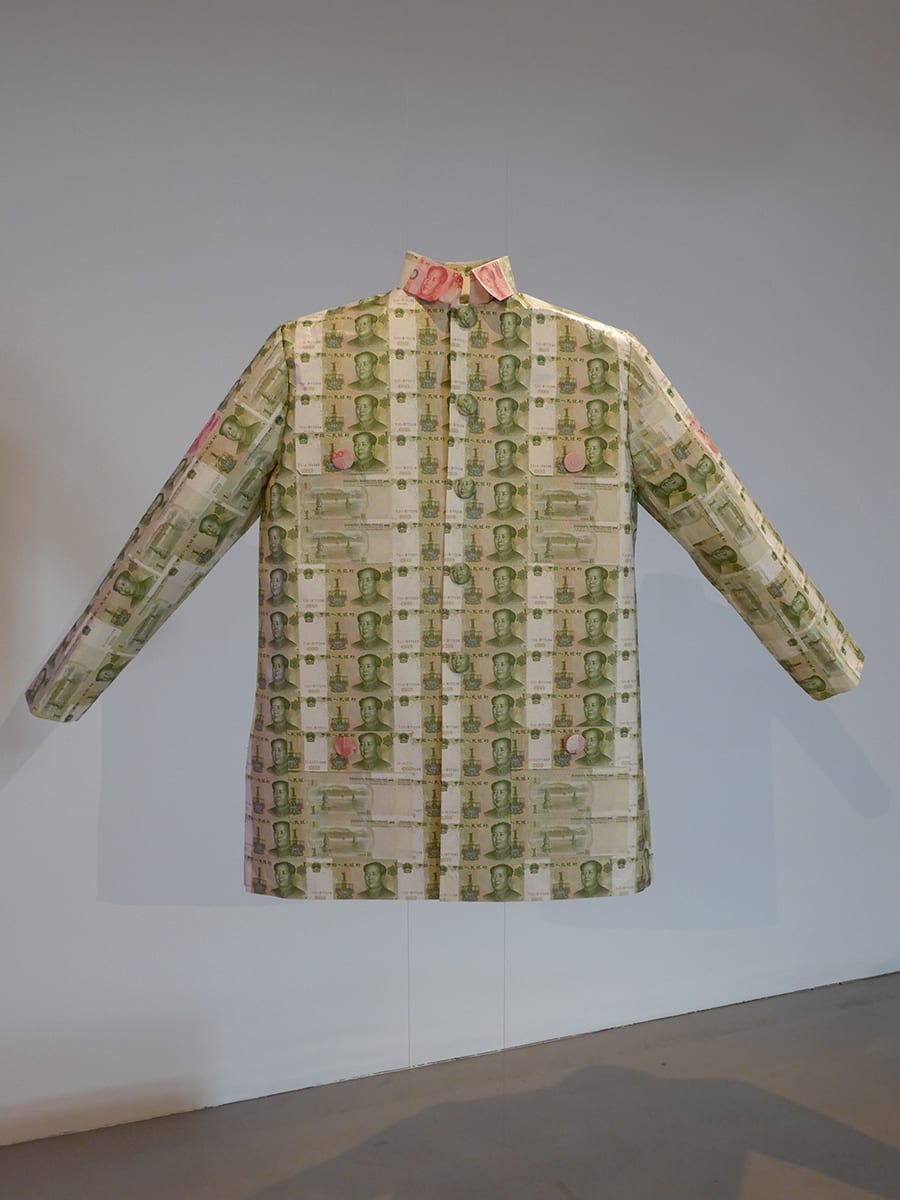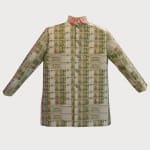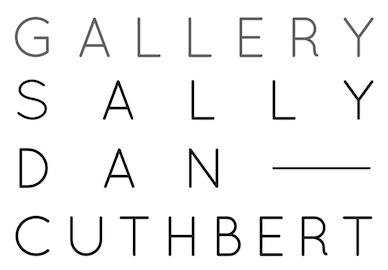Abdullah M. I. Syed
Capital Couture: Chairman Mao's 1 and 2 Yuan Jacket, 2019
uncirculated Chinese 1 and 100 Yuan banknotes, fabric and invisible thread
88 x 62 x 15 cm
Further images
My work is made from hand-stitched and machine-stitched, uncut, uncirculated banknotes of 1 Yuan on which the portrait of Chairman Mao is printed. The orientation of the design on the...
My work is made from hand-stitched and machine-stitched, uncut, uncirculated banknotes of 1 Yuan on which the portrait of Chairman Mao is printed. The orientation of the design on the jacket mimics the actual design of the Yuan, displaying Mao’s face across the front, and a Chinese garden along the back.
This style of jacket, The Zhongshan suit, combines deliberate eastern stylization (a flipped collar, five buttons for the five branches of Chinese government, four outer pockets to represent the Four Virtues, and three cuff buttons which allude to Sun Yat-sen’s Three Principles of the People text) with a classic western business suit. One can also see distinct influences from military and student uniforms. It was created under the leadership of SunYat-sen, who wanted to find a style of clothing that suited modern sensibilities without completely adopting western styles. Because of its nationalistic beginnings, it organically became a symbol of proletarian unity after China’s Communist Revolution in 1949.
Today, the Mao Jacket can be seen as a political combination of western and eastern cultures, a patriotic symbol that gave the Chinese a style that is uniquely theirs. A Mao Jacket constructed of Chinese RMB even further envelopes the garment in nationalistic pride, and directly alludes to the style’s political undertones.
This style of jacket, The Zhongshan suit, combines deliberate eastern stylization (a flipped collar, five buttons for the five branches of Chinese government, four outer pockets to represent the Four Virtues, and three cuff buttons which allude to Sun Yat-sen’s Three Principles of the People text) with a classic western business suit. One can also see distinct influences from military and student uniforms. It was created under the leadership of SunYat-sen, who wanted to find a style of clothing that suited modern sensibilities without completely adopting western styles. Because of its nationalistic beginnings, it organically became a symbol of proletarian unity after China’s Communist Revolution in 1949.
Today, the Mao Jacket can be seen as a political combination of western and eastern cultures, a patriotic symbol that gave the Chinese a style that is uniquely theirs. A Mao Jacket constructed of Chinese RMB even further envelopes the garment in nationalistic pride, and directly alludes to the style’s political undertones.






